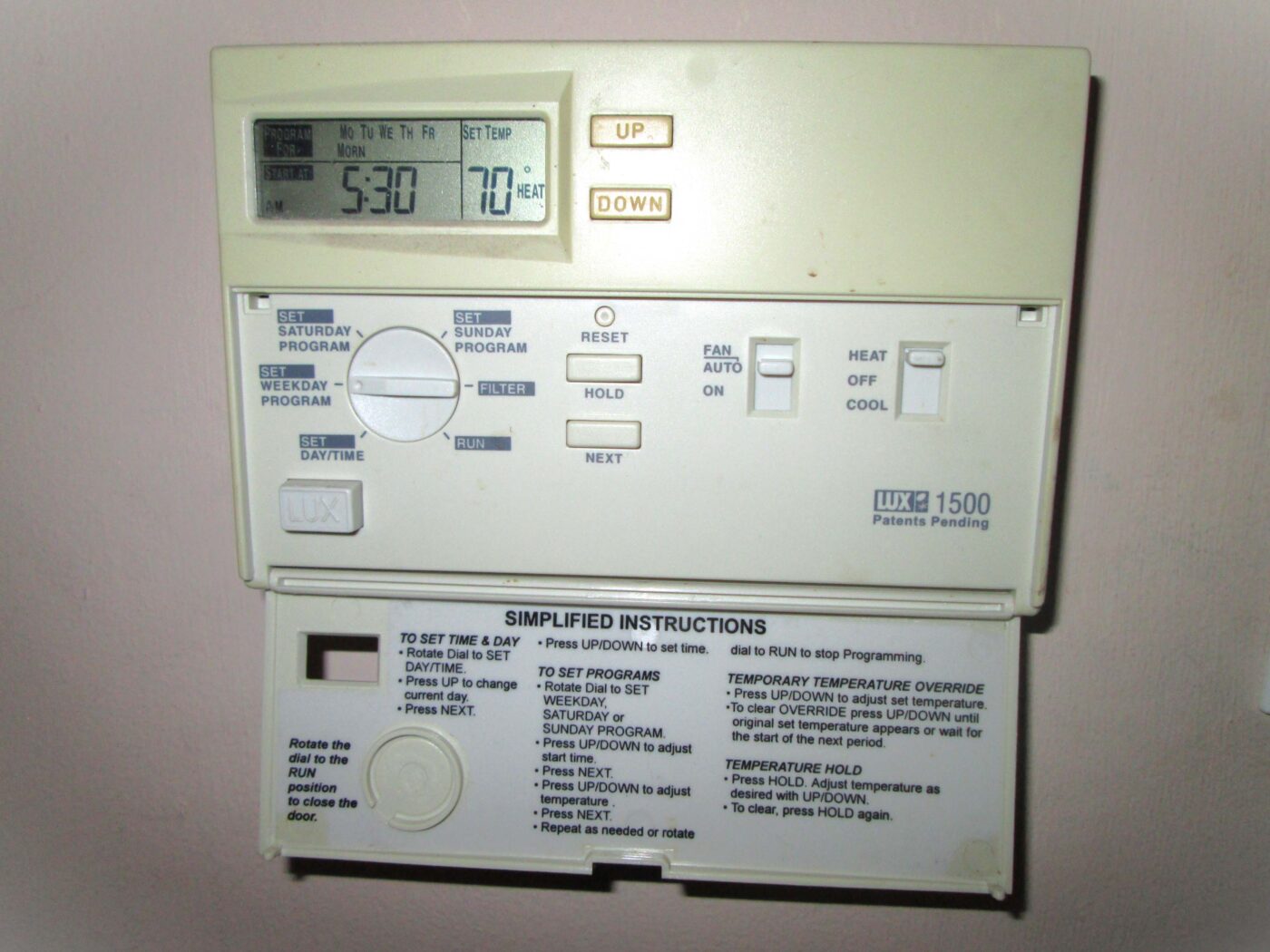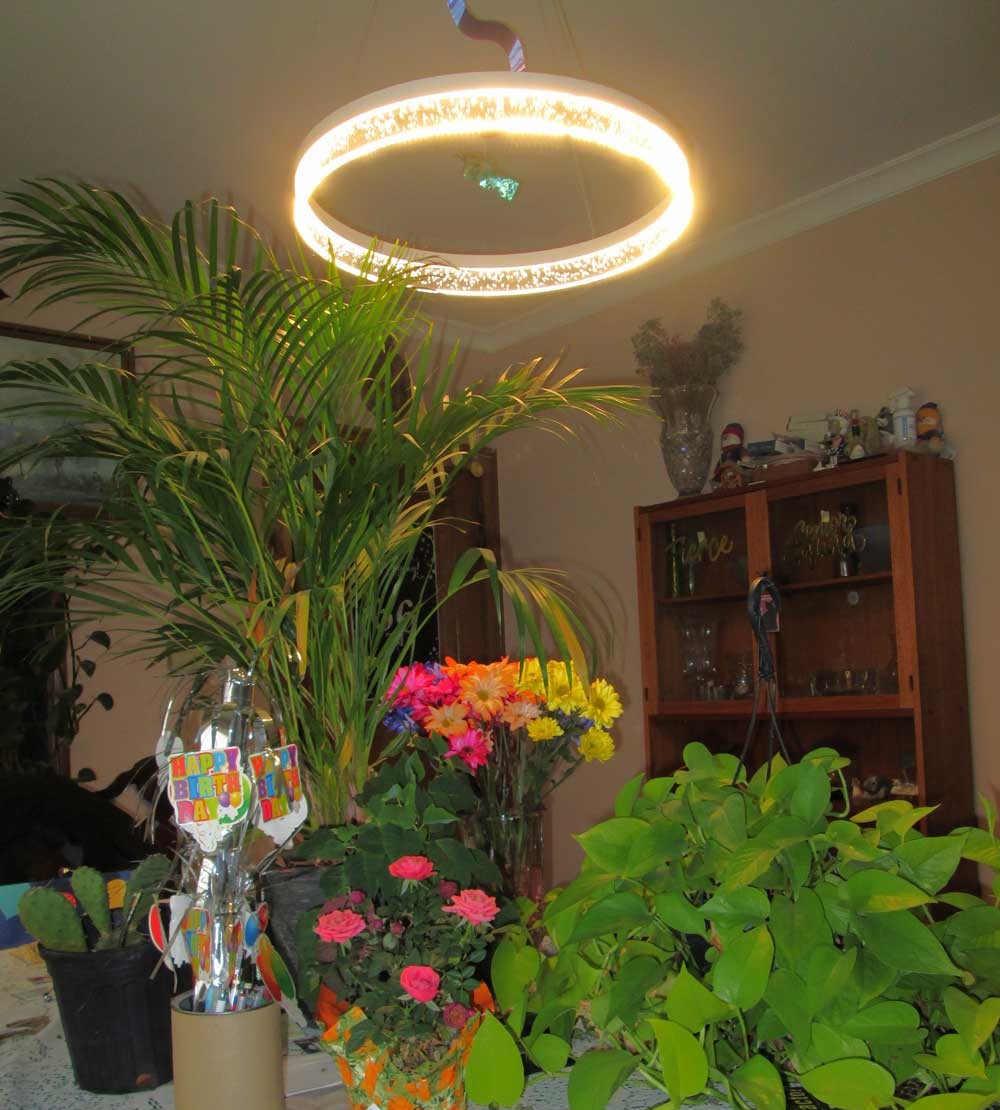
Our Experience
Our electricity use in Chicago is about half of average neighbor use, and slightly below the lowest quarter neighbors. The figure above shows average neighbor use (black line), homes in the lowest quarter (green line) and our home (blue line). Our excellent performance is due to sealing our home to minimally let winter cold or hot summer air in, as well as allowing our temperature to range in summer and winters. Our best performance relative to other homes include summer months, when we close up the windows when outside temperatures exceed indoor temperatures and close drapes on east and west windows during sunny hours. We usually allow temperatures to drop at night during winter months, giving us some savings over the lowest quarter homes, but in October through December (above) due to a sick cat, we left the temperature warm all night, showing equivalent performance to the lowest quarter homes. We do air condition only part of the house during the summer.
This older 1930s home was originally not energy efficient. We have implemented most of the recommendations described in this section: Optimize Energy Efficiency. Newer homes may be much more efficient than this home, require fewer optimizations, and see smaller gains.
Your Choices
Three ways to reduce energy use is to program your thermostat to use less energy when you are away from home or sleeping; use LED lights for your most often used lights; and use ceiling fans, or free air when the temperature is right outside, and close up when it gets too hot or cold.
| Action Choice and Link | Dollar Cost | Notes |
| Program Your Thermostat to Use Less Energy While Asleep or Away | 0 or $$ | 20 minutes to program thermostat |
| Use LED Lights for Your Most Popular Lights | $ | LEDs last long, lower heat and reduce costs |
| Use Ceiling Fans To Adjust How Temperatures Feel by 4-6° F | 0 or $$$ | If installed, just use in proper way. Otherwise, will need to purchase and install |
Program Your Thermostat to Use Less Energy While Asleep or Away
Old and new homes benefit from using a programmable thermostat. If you are not home during the day, why heat or cool the house to a comfortable temperature? When asleep at night, allow the thermostat to reduce to lower temperatures in winters, and buy a good quilt. Different types of thermostats allow programming either by individual day or weekday/weekend, and can raise or lower temperatures at specific times during the day or night, for winter and summer.

Benefits: Lower costs at no loss of comfort (once the thermostat is optimized for the required lead time for temperature adjustment.)
Use LED Lights for Your Most Popular Lights
Did you know that incandescent lights’ use of electricity was 90% generating heat and 10% generating light (Amann et al., 2012)? LED technology has fully matured, including providing interesting shapes for lighting, in addition to much lower costs, varied light colors, longer lifetimes and reduced fire hazards. Light colors are indicated by ‘Kelvin’, where 2700k is most yellow (“warm white”) and 5300k is bluest (“daylight” or sunlight on a bright day). For best efficiency, use LEDs in particular for the lights most commonly turned on.

Use Ceiling Fans To Adjust How Temperatures Feel by 4-6° F
A breeze cools similar to how you feel cooler when you exit a pool. In summer months, a ceiling fan can cut costs and increase comfort, by making a room feel 4-6° F cooler by providing a breeze all day or night (Harley, 2012). Fans can be reversed (clockwise), bringing hot air down to room level in winters or whisking hot air up (counterclockwise), with the breeze cooling you off (Amann et al., 2012). Larger rooms need larger fans. Ceiling fans cool people but do not reduce room temperature, so turn them off as you leave the room.

References
- Harley, Bruce (2012) Insulate and Weatherize for Energy Efficiency at Home. The Taunton Press, Newtown CT.
- Amann, Jennifer Thorne, Wilson, Alex, and Ackerly, Katie (2012) Consumer Guide to Home Energy Savings, 10th edition. New Society Publishers, Gabriola Island, BC Canada.
